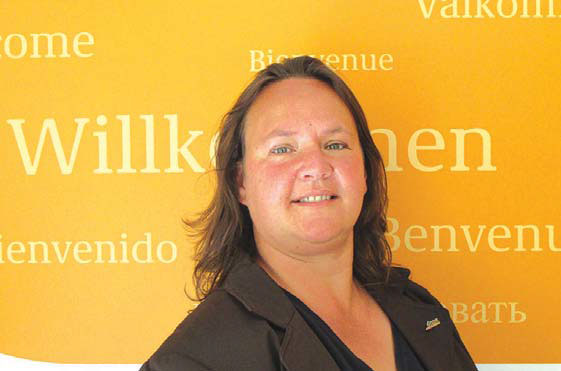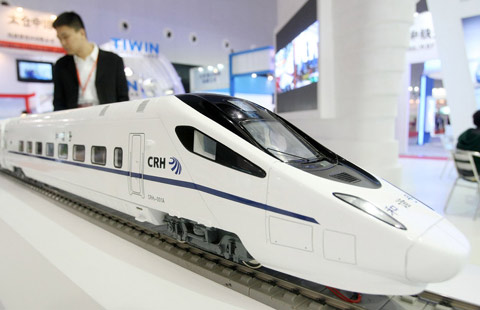Passive system activates efficiency
Updated: 2015-07-03 07:21
By Cecily Liu(China Daily Europe)
|
|||||||||||
German government working closely with China to promote sustainable, natural technologies to cut energy use
As one of the earliest countries to implement passive building designs as a way to reduce buildings' energy consumption, Germany has many experiences to share with China, says Nicole Pillen, deputy head of energy-efficient buildings at the German Energy Agency, also known as Dena.
"Germany started the journey of developing energy efficient building techniques early, and the German government places a lot of emphasis on sustainability," Pillen says.
|
Nicole Pillen says Germany has many experiences to share with China in construction of energy-efficient buildings. Provided to China Daily |
The idea of passive design originated in 1988 through research projects, aided by financial assistance from the German state of Hessen. Passive design uses natural methods such as a glass roof, ventilation, and heat conservation to reduce the amount of energy buildings consume, and since then these building methods have become popular globally, including in China.
Dena was founded in 2000 to help Germany's public and private sectors work together to promote and develop efficient buildings. Its cooperation with Chinese partners started in 2006 as a result of the close relationship between Germany and China and the two countries' ministries of construction.
It primarily works with China's Ministry of Housing and Urban-Rural Development, but also with private companies both in China and Germany.
Pillen says Germany achieved great results in developing building sustainability because the government has the correct policies in place to encourage the sector's growth, and has also put in place financial incentives to encourage developers to take on sustainable building practices. There also are market mechanisms and tools to help this sector's long-term growth.
"As the government has also recognized the energy-efficient and environment friendly construction market cannot be sustained by government initiatives alone, it has encouraged private sector activities. One example of a market tool is an energy performance certificate developed by Dena that became compulsory for all buildings in Germany in 2009," Pillen says.
The energy performance certificate developed by Dena includes a way of calculating the amount of energy used by a building, and helps buyers or tenants of a residential building make decisions about how much they would be willing to pay for a property, providing incentives for property developers to reduce energy consumption, she says.
"Although China has also had a similar certificate since 2012 that assesses energy performance, it is only voluntary and has been exercised mostly for large public buildings, hardly ever for residential buildings, especially not for privately owned housing units. So it is still not widely recognized by the general public.
"Furthermore, many Chinese residents may be unfamiliar with the importance of energy conservation because energy costs in China are still relatively low. Many Chinese buildings are also not built with long-term use in mind. This is very different from Germany, where building owners would look 100 years ahead," she says.
Pillen says that because China is a big consumer of energy, its energy costs are bound to grow in the middle- and long term, and initiatives such as the energy performance certificate can help to promote an energy conservation mindset.
It is also encouraging that many Chinese developers, with whom Pillen's staff is communicating more frequently, consider the importance of providing residents with a happy experience, achieved by having energy efficient materials and solutions that would allow the environment of the building to feel more synchronized with a natural way of living.
"We have a lot of partners in second and third-tier Chinese cities who are looking at energy-efficient and high-quality construction methods to attract homebuyers who want to live in more comfortable, healthy and energy-saving new homes, and using this to increase their competitiveness," she says.
Dena's work in China has helped to increase the public's awareness of passive buildings and other energy-efficient building techniques, and led to an increase of demand in this sector, in turn providing many opportunities for German firms.
"As energy-efficient building techniques in Germany developed early, many companies have great experience to share. Many German firms in this industry have actually been operating in China for 10 or 20 years, but did not do so well in the early years because market demand was not high enough," Pillen says. These companies are now partners on many Dena projects, which helped create new business opportunities for them.
One of Dena's earliest projects in China was the Zai Shui Yi Fang pilot project, an apartment block in Qinhuangdao, a port city in northern Hebei province. It was completed in 2013 and demonstrates many low-carbon passive building techniques based on the German passive house concept and its efficiency standards.
Subsequently, together with the Center of Science and Technology of Construction, Ministry of Housing and Urban-Rural Development, Dena has implemented many more projects over the past two years, both in the public and private sectors. Its 26 projects in different phases of planning, construction, testing, completion and monitoring are spread across nine provinces.
Dena also is using its pilot projects to gather energy performance statistics that would provide workers with a better understanding of special requirements of passive building in China's climate and environment.
Realizing that Germany's climatic conditions are similar to Hebei province, Dena has already assisted the provincial government in creating the first voluntary passive building standard guideline, which came into effect on May 1 in the province.
"We hope to work together with other Chinese local governments to draft high-efficiency building guidelines that are suitable for their specific climates, which we can do with new experience and knowledge gained from our pilot projects across the country," Pillen says.
(China Daily European Weekly 07/03/2015 page15)
Today's Top News
Russians will 'surprise' in victory parade: Ambassador
China-France partnership 'will benefit all'
Greece in billions of financing gap over next three years
Securities regulator fires up new policies to stem market plunge
Putin to meet Iran's President Rouhani at SCO summit next week
China stocks retreat in biggest three-week plunge since 1992
Uygur life in the ancient city of Kashgar
China-France partnership 'will benefit all'
Hot Topics
Lunar probe , China growth forecasts, Emission rules get tougher, China seen through 'colored lens', International board,
Editor's Picks

|

|

|

|

|

|







